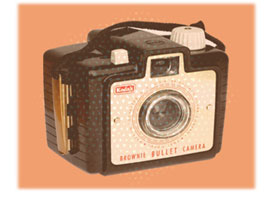The world of commercial photography has changed enormously in the last decade or two, mainly due, in my humble opinion, to three ground breaking factors...
1) Digital Technology. It was in The Bing Crosby Laboratories (yes, the very same!) back in 1951 that the first Video Tape Recorder captured live images from TV cameras by converting information into electrical impulses and then saved onto magnetic tape. Then in the 1960s, NASA began sending digital images back from their moon space probes and subsequently installed digital cameras into spy satellites.
In 1972, Texas Instruments patented the first ever film-less still camera and the digital revolution had begun. Kodak took over the reins in the '80s and in 1990 the first fully digital camera, the DCS 100 was launched and photography would never be the same again.
Digital changed the entire advertising production world by bringing us 'instant' images, a far greater choice of images (i.e. easily offering a 100 or 200 images instead of just a few), instant transmission (on disk or via the Internet) and work became faster, cheaper and more versatile.
However, it had its downside. Many industries ground to a halt; photographic studios, neg & print shops, bromide printers, manufacturers and retailers, traditional artwork (paste-up) and there's many an old photographer who considers that quality has been lost - but in the commercial world specifically, with the quality of 'resolution' going through the roof, this is now becoming a weak argument.
2) Photoshop. The development of Digital Imaging Systems, such as Photoshop, has created astonishing opportunities for photographic excellence, trickery and image improvement. It has totally taken over the role of the retoucher (from those traditional and brilliant airbrush artists) created easy montaging, quick removal of blemishes, easy tone enhancement, simple colour change and, importantly, the ability to easily redress a cock-up, remove an embarrassing face or 'drop in' some idiot who was late for the shoot!
3) Ease of Usage. Unfortunately, this is more a negative (no pun intended) as with so much modern technology 'ease of usage' allows anyone to pick up an advanced camera and take photographs for commercial use having little or no photographic skills or experience, and this lack of quality or excellence can so often be seen in today's advertising.

I personally handle a certain amount of pack and interior shots, however, when the work demands a special excellence then we call in the experts who live and breathe their totally different areas; Car photographers, Fashion photographers, Wildlife photographers, Equestrian photographers, Photojournalists, Food and even Still Life photographers who have more vision than you can possibly imagine.
I've often worked with such brilliant people whose knowledge and expertise of their own highly specialised areas never cease to amaze me. They taught me all I know about photography - but obviously not all that they know!
The world's first photograph was created in the summer of 1826
by Joseph Niepce.